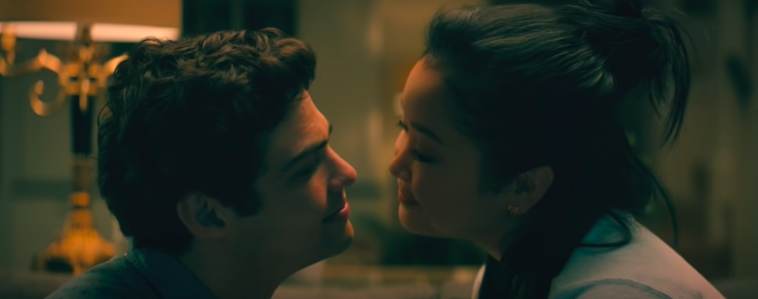To my eternal dismay, I’m turning 20 in a few months. I’m still looking for a workaround on this, but in the meantime, I only have a few more chances before I have to jump off the “Teenage Girls Deserve Better Movies” soapbox.
Perhaps it’s easier for adults to let the distance from their adolescence gloss over the flaws in a movie like To All The Boys: Always In Forever, the third and final installment of what began as a charming teen rom-com series and diminished in quality as time went on. But as a still kicking, bona fide teenage girl, I refuse to settle for less.
This is not to say I had high expectations for this release. Netflix’s slate of teen romances from the last few years, such as The Kissing Booth 1 and 2 or The Last Summer, have been unbelievably bad. And my memory of the second TATB movie — which follows Lana Condor’s Lara Jean Covey navigate a love triangle between an old flame and her boyfriend, Peter Kavinsky — isn’t too flattering. Especially given most of the plot felt overblown and contrived, with some of the biggest conflicts being drummed up over which guy brought the pizza. Like, at least Pretty in Pink had class tension.
[Be your own Valentine this year]
This latest release has a more sound plot at least, following Lara Jean’s struggle to choose between what could be the college of her dreams, New York University, and the future she planned to pursue with Peter at Stanford. It’s a conflict I’m sure many high school couples watching can relate to.
And the movie deserves credit for navigating their conflicts in a healthy, measured way. Lara Jean may struggle with the choices she has to make for the future of her relationship, but she’s emphatic and unwavering in prioritizing what’s best for her, making it clear sacrificing her will and ambition for her high school boyfriend isn’t even on the table.
But a legitimate conflict doesn’t make director Michael Fimognari’s adaptation any less rudimentary. Do I want a cute boy to affectionately call me by my surname like Peter does with “Covey?” Yeah, sure, maybe. Does that make up for lack of chemistry Condor and Centineo once seemed to have, now stamped out by the declarations of love that are so sweet it’s saccharine dialogue? Probably not.
Centineo — who now looks far too old to pull off high school age — spending 90 percent of the movie in the role of the good, supportive boyfriend is all fine and well. But his character’s compatibility with Lara Jean just seems to be implied and not actually shown throughout the sequels.
[‘Framing Britney Spears’ finally brings #FreeBritney theories to the mainstream]
The precious comic relief of Kitty Covey, Lara Jean’s younger sister, is too gimmicky, and even the side plots — the impending wedding between Lara Jean’s widowed father and their neighbor, and Peter reconnecting with his estranged father before he leaves for college — are diminished by the script’s utter predictability.
And what’s more disappointing is the glamorization of elite, ridiculously expensive colleges with either single digit acceptance rates or $75,000 price tags. To All The Boys: Always and Forever certainly isn’t the only piece of teen media guilty of completely ignoring how college admissions actually work or overestimating the likelihood their protagonists will even get in. (I’m sorry, but if you’re a white boy from Portland and you lack the cultural competence to know what the term “meet cute” is or have never heard of literally one of the most famous movies ever, Say Anything, like Peter Kavinsky in this movie, then I’m hard-pressed to believe you deserve to go to Stanford on scholarship.) But can we get a movie that actually acknowledges the reality of applying to college in America?
The application process is less about considering NYU, UC Berkeley or UCLA as safeties and more about busting your ass to get into the school of your dreams — being expected to commodify every unique thing about you so you can “set yourself apart” and finding your mental health overwhelmed by constant comparisons to more qualified applicants in the process. And then you get hit with the devastating reality, only after you’ve gone through all that, that spending $200,000 for a degree in English isn’t economically feasible for the average American family.
As a review from Vulture puts it, “The movie — not to mention countless college advisors and loan brochures — [tells] 17-year-olds that this is an appropriate way to think about university. Don’t think of college as an educational institution that charges money, they say. Instead, think of school as a love-object. Once that connection has been forged, only a monster, only a Montague would stand in your way.”
Whether it’s the intro sequence with Seoul, Korea, in the background, a glimmering rooftop party in New York or the affluent Portland suburb the film is set in, To All The Boys: Always and Forever is easy on the eyes and a simple watch that goes through all the motions — not particularly meaningful, memorable or any worse or better than I expected. I know that’s all we’re supposed to get out of a movie like this, but that doesn’t make it any less upsetting to see how absolutely minimal the standards are with movies for and about teenage girls, who are, in reality, leaps and bounds more interesting, self-aware and dimensional than the representation they typically receive.



